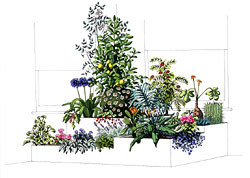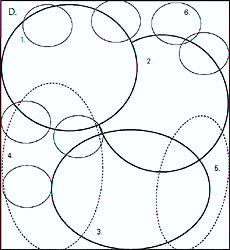
 Illustration by Catherine Brighton |
Janice Kerbel + Felicity Callard
Garden for Agoraphobe
Agoraphobia carves its own landscape. Parts, perhaps all, of the public sphere are marked off-limits in the turn towards the domestic. FreudŐs early account of agoraphobia considered the agoraphobe as a thwarted prostitute who kept herself inside so as not to take the first man on the street. The thwarted prostitute might today seem Freud's own fantasy, but his framing of agoraphobia through desire dismantles the illusion of home as a site devoid of anxiety.
But the home also holds out the promise of keeping the assaultive power of an inflammatory world at bay. For if anxiety cleaves to particular objects, its taming does so too. Spaces and objects both solicit and assuage anxiety. Their composition can intervene in the spreading of unease.
 |